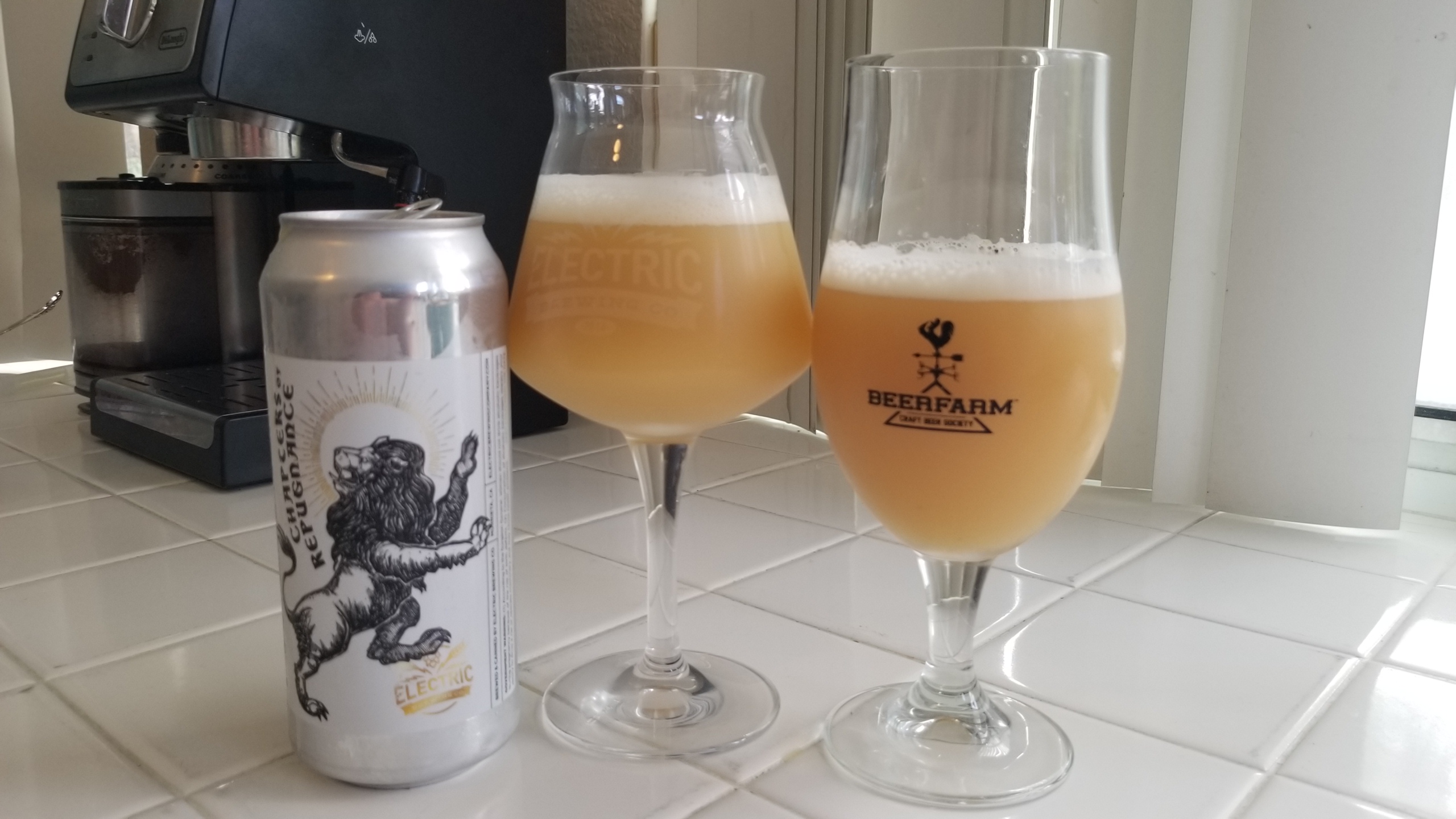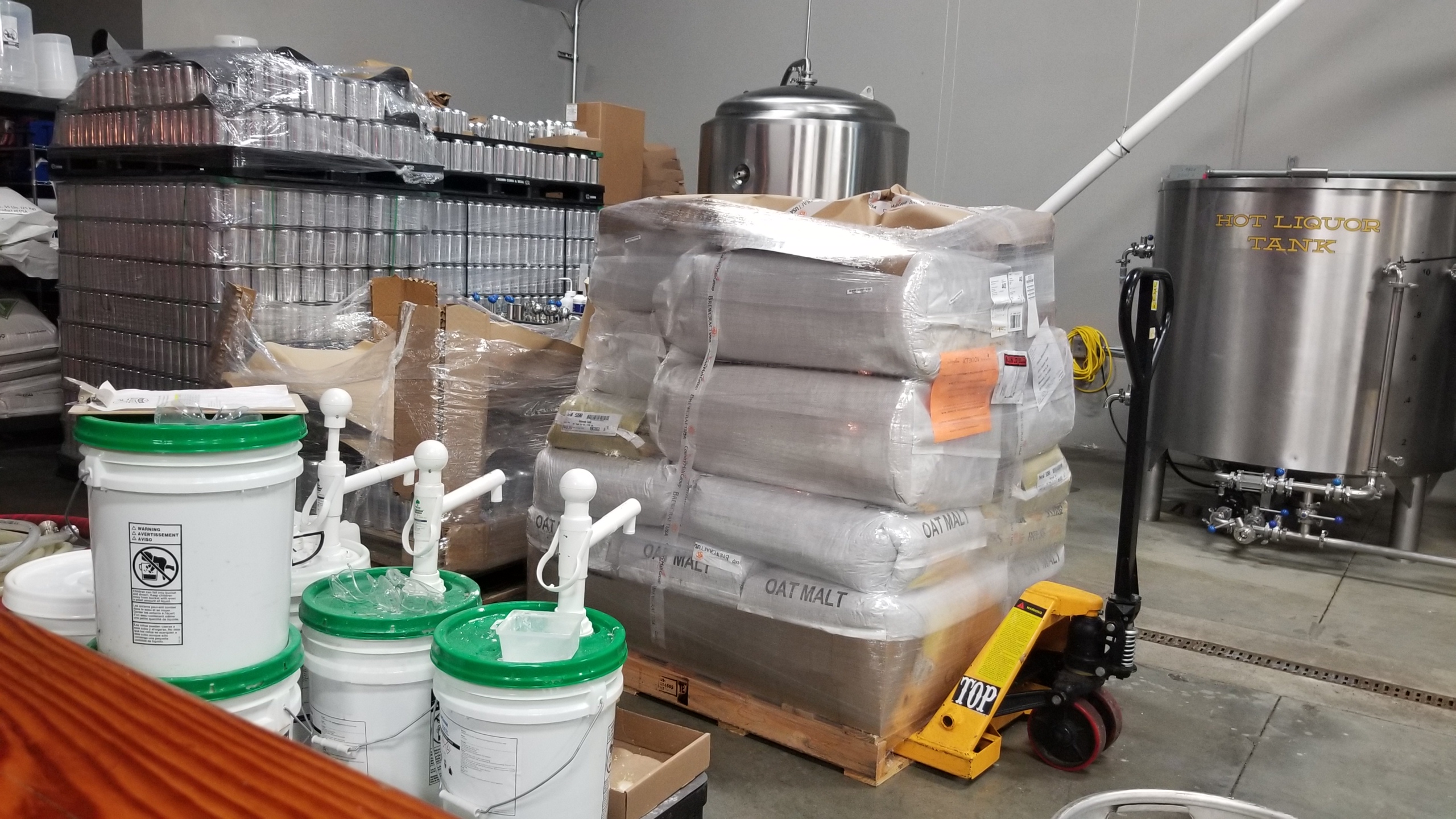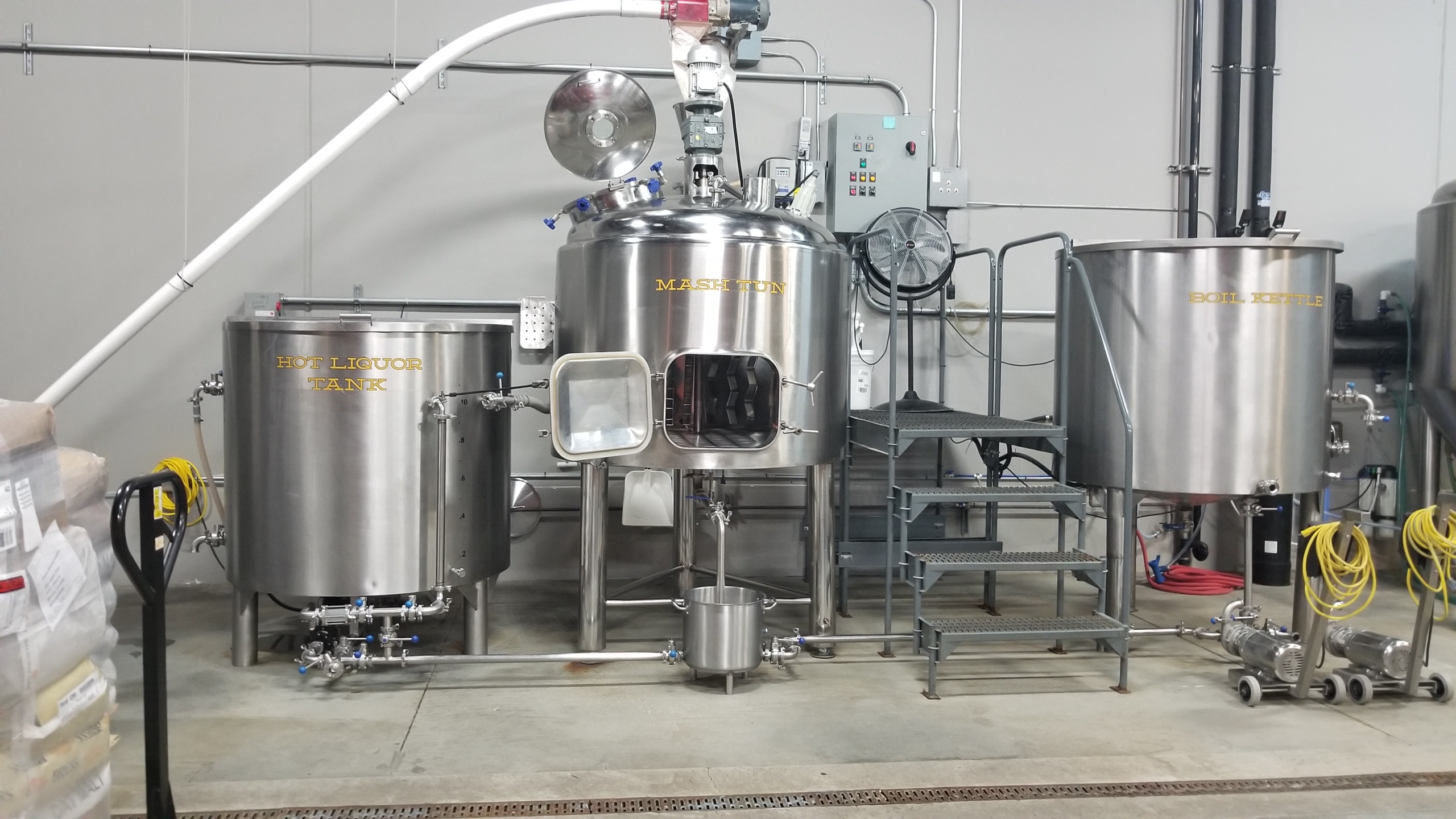Dgallo
Instagram: bantam_brews
Thanks brother. Between 4-5 most likelyNOw that is a nice color, what SRM are you calling it?

Thanks brother. Between 4-5 most likelyNOw that is a nice color, what SRM are you calling it?
I’m a pretty firm believer in the long rest at 160-162 for most beers. I think it really helps with foam, mouthfeel, fullness.
Im learning there are so many ways to skin a cat and come out with a delicious ipa. Different hops/hopping schedules, grain bills, yeast selections, water profile.. list goes on. American IPAs lead to the introduction of west coast, west coast IPAs lead to NEIPAS and now people are continue to experiment with NEIPAs, now milkshake and oat cream Ipas are becoming popular. Try some solid commercial versions and then attempt to brew them to see what your preference is. As long as your producing A solid beer, who cares how your doing itBoth these beers look super awesome. Dgallo is helping with a grain bill and process, (Thanks!) and I am getting ready to give it a go. I am super excited. Will post details.
I realize this isn't the place for discussing, but I am also in the process of buying some new gear. I am planning on starting another thread in the equipment section. The plan is to go to a 3 vessel system for my first all-grain.
I second the alpha rest. I believe (and maybe it's confirmation bias) that my beers improved markedly when adding a rest at 162ish. Head for days. Perfect body.This is really no different than a recipe for say a West Coast style IPA. 2row, carafoam, Carahell or Honey Malt. The difference is yeast and water profile. Certain English Ale yeasts just don’t clear if they’re dry hopped after fermentation. This same beer made with Chico and a different water profile would probably clear. The yeast had flocced quite hard when the dry hops were added to this beer, it had cleared quite a bit. The more “stuff” in solution when you dry hop, the more “stuff” to drag down the oils you want in the finished beer.
This is yeast harvested from cans of Crooked Stave IPA.
I’m a pretty firm believer in the long rest at 160-162 for most beers. I think it really helps with foam, mouthfeel, fullness.
Still messing with water. Still don’t feel like I have that fully dialed. Mostly CaSo4 but some NaCl and just started using more KCL. We’ll see. Messing with adding certain salts to the kettle as well.
This beer is especially murky as it was dry hopped with a massive dose of Australian hops. Galaxy, Vic Secret, and a ton of Ella. It took a little longer to become more drinkable cause of all the polyphenols in those hops.
I second the alpha rest. I believe (and maybe it's confirmation bias) that my beers improved markedly when adding a rest at 162ish. Head for days. Perfect body.
I've become a huge fan of NaCl for my chloride addition. I always get this horrible minerally taste when I use a lot of CaCl. I don't get anything like that with NaCl. Plus, it's like adding salt to food. It amps up the flavor. I've gone up to about 100 ppm of Na without it tasting salty. At 100 ppm, if I really look for it, you do get a hint of salt on the tip of the tongue. But nothing overpowering.
















Lacking esters fermented at 69-70f, held its haze but also held alot of yeast particulate even after cold crashing, fermented pretty identical to 1318. I've used it a few times usually around 80% attenuation
1318 and dryhop are much more expressive and clean up in the keg much quicker, just wasn't overly impressed with it.
I've got two more packets in fridge that I plan to use at some point with @Dgallo fermentation schedule to see if I can get more esters out of it
Scored an 11lb bag of hand selected Citra from one of the West Coast’s better hop forward breweries... let’s just say it’s not a level playing field. I thought I had some decent Citra before... not even close.
I've become a huge fan of NaCl for my chloride addition. I always get this horrible minerally taste when I use a lot of CaCl. I don't get anything like that with NaCl. Plus, it's like adding salt to food. It amps up the flavor. I've gone up to about 100 ppm of Na without it tasting salty. At 100 ppm, if I really look for it, you do get a hint of salt on the tip of the tongue. But nothing overpowering.
A little bit salt (Sodium) is good for beer flavor perception. 100 ppm of Na+ may not get in the way, it may even enhance a NEIPA, but surely is a boat load for most other beers.Appreciate the tip on the NaCl. I got some mineral taste in my 146 ppm Cl brew using CaCl. It did mellow out and disappear after a week or two, but I might try the NaCl if I taste it again...
Barke Pilsner is fantastic. It is all I use in pilsners/lagers. I buy Barke Pilsner and Barke Vienna by the sack. Love it.I joined the lowoxygenbrewing forum a while back and stumbled upon Weyerman Barke Pilser. I brewed a pilsner with it plus 5% carahell and 3% melanoiden malt about a month ago. It tastes and smells like honey, has awexome mouthfeel, and has unbelievable foam / lacing. Taking a que from @couchsending (no flaked adjuncts, or oats or wheat plus beta & alpha rests) I am going to brew my next NEIPA with the same grainbill.



I joined the lowoxygenbrewing forum a while back and stumbled upon Weyerman Barke Pilser. I brewed a pilsner with it plus 5% carahell and 3% melanoiden malt about a month ago. It tastes and smells like honey, has awexome mouthfeel, and has unbelievable foam / lacing. Taking a que from @couchsending (no flaked adjuncts, or oats or wheat plus beta & alpha rests) I am going to brew my next NEIPA with the same grainbill.
IMO, Stan's value is in talking about other's work. He has an audience and studies the topic. And I had no idea who those two mentioned were.I’ve seen you reference Scott and his studies a lot, which is great, I enjoy reading his reviews a lot too. I would also recommend Tom Shellhammer, an actual brewing scientist (no knock on Scott).
Relevant hop articles are under the Research tab here:
https://www.google.com/amp/s/www.researchgate.net/profile/Th_Shellhammer/amp
I didn't notice Brad's eating, but you would think after 189 shows he would have learned how to interview. He leaves valuable information from the guest just hanging while moving onto the next question. It's like he isn't listening sometime.... with Brad Smith eating and smacking his lips in the background the whole time Stan was talking. So far he talked about the haze being mostly proteins, some hops compounds, very little yeast which I think most people have come around on.
Where can I find Scott's Janish's info?The only person that is putting out any new info on the style with true evidence and full disclosure on the studies he does or ones he references is Scott Janish. I’ve learned to solely depend on his finding and my own experiences.
http://scottjanish.comWhere can I find Scott's Janish's info?
Side note I recently made a Citra IPA with a24 and it came out fantastic. I liked it better than the a38 that I usually use. CheersNeed to give a shout out to Imperial Yeast here. I had a question on starters / harvesting / repeated pitching regarding A24 because of its blend of conan and Sacch trois and perhaps differing propagation rates of the individual strains and within 24 hours I got this response:
Hey Andre,
Thanks for reaching out! You are correct, the A04 Barbarian and A20 Citrus blend is 50-50%, but due to the differing flocculation rates, that ratio will change from gen to gen. When you harvest, you can homogenize to the best of your ability, but still expect some drift over time. Let me know if there are other questions that come up!
Cheers,
Nina
To be honest I didn't even consider flocculation and harvesting. I then posed the question regarding the starter and the answer was the same:
Andre,
You can expect that ratio to be very close to 50-50 with a prop. Just pitch the whole starter (do not decant) when you pitch.
Cheers,
Nina
So basically, if you aren't entirely homogenizing, your A24 will drift which by nature means no harvesting, only overbuilt and non-decanted starters if you want to keep it as consistent as possible.
Scored an 11lb bag of hand selected Citra from one of the West Coast’s better hop forward breweries... let’s just say it’s not a level playing field. I thought I had some decent Citra before... not even close.
anyone using A24 adding extra lactic acid just before fermentation for the sacc trois to munch on? I messaged imperial about A24 also and asked about Lactic acid additions and ethyl lactate but they didnt have any information on that. I have read several accounts on previous posts about adding several mLs per gallon on this forum and MTF, so I'm definitely planning to do it. Just wondering if there are any more anecdotes so that i can dial in my addition.
You can repitch from overbuilt starters. I don’t know for how long though, I’ve only done 3 generation that way. I didn’t notice any sway in the profile but it’s bound to happen eventuallyHaving not tried A24, can you repitch this? I am cheap and like to overbuild my starters to harvest yeast. Knowing that A24 is a blend, its seems like it is not a good for the repeatability of a beer.
Wouldn’t that be based on the old assumption that Sacch Trois was actually Brett? If it’s not Brett then would it create those flavors by converting lactic acid?